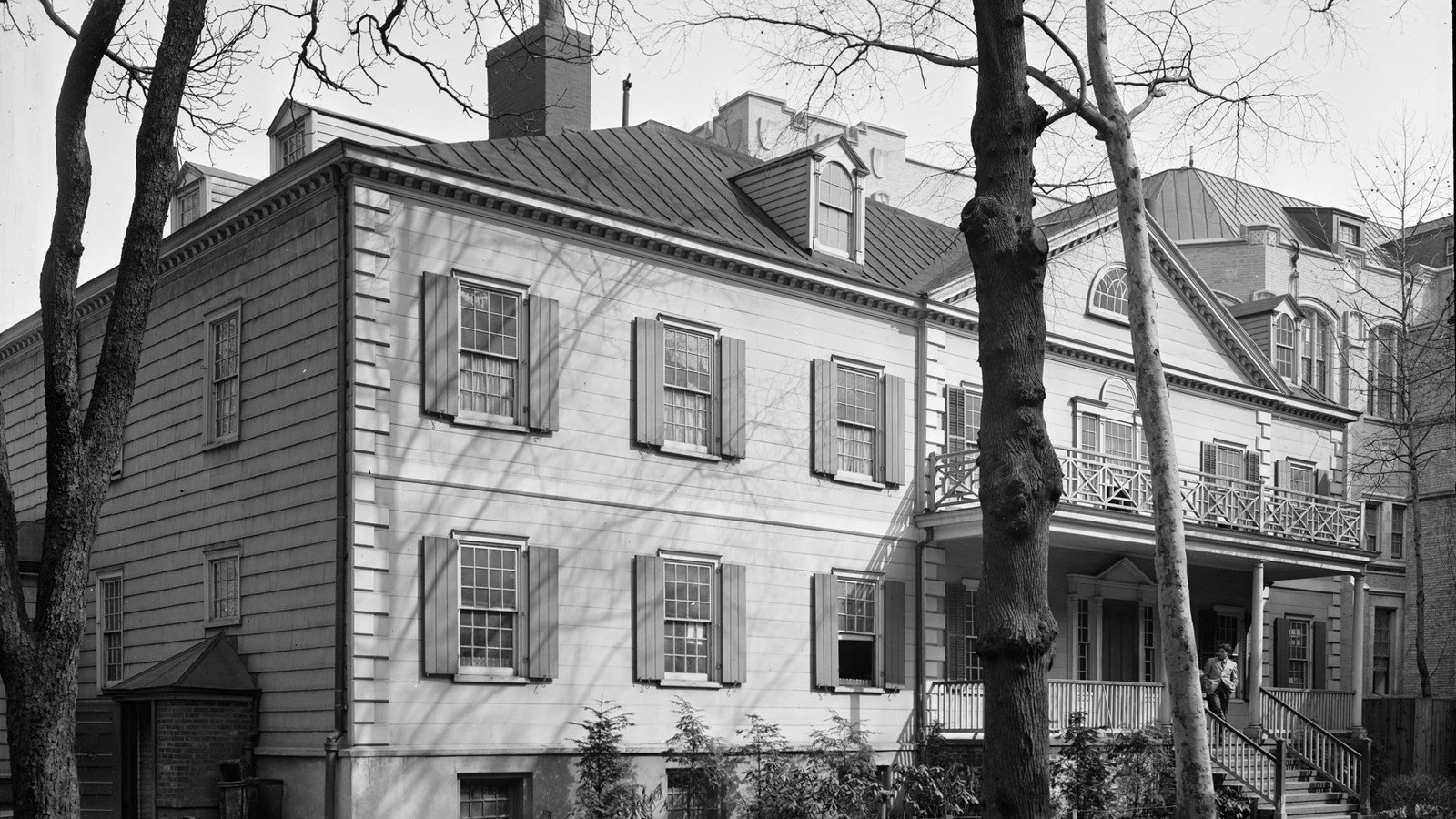Last updated: June 10, 2024
Place
Erasmus Hall Academy

https://www.loc.gov/pictures/item/ny0244.photos.116945p/
By Jade Ryerson
Founded in 1786, Erasmus Hall Academy is one of the oldest schools in the country. With its Federal Style frame and clapboard sides, it is one of the few remaining structures dating to immediately after the Revolutionary War. The institution first opened in 1787 as a private academy with funding provided by Founding Fathers including John Jay, Alexander Hamilton, and Aaron Burr. By 1896, steep declines in enrollment led to the school’s donation and incorporation into New York’s public-school system. In addition to the merger, large increases in enrollment throughout the 1900s and 1920s required the school to expand into new buildings. These structures featured the Collegiate Gothic style and were completed over four stages in 1905-1906, 1909-1911, 1924-1925, and 1939-1940. The first of these new buildings featured ornate decoration including towers, parapets, and grand arched entrances. These buildings were arranged around a quadrangle and included plans for a gymnasium, auditoriums, lecture halls, a library, a chemical laboratory, and classrooms. However, the increasing size of the student body, especially from the growing immigrant population, made the construction and maintenance of these new rooms quite difficult.
Among the students at Erasmus Hall was Mabel Ping-Hua Lee, an immigrant from China. Mabel’s experiences at Erasmus Hall provided the foundation for her commitment to social justice. By the age of 16, she had become a well-known figure in the New York City suffrage movement. She even rode on horseback in the women suffrage parade down Fifth Avenue in 1912. As a result, the New York Times and the New York Tribune reported about Mabel’s academic and family history. Mabel’s political activism would continue beyond her time at Erasmus Hall. She succeeded in inspiring more Chinese women to participate in a second march in 1917. Mabel was also interested in economic improvement and social equality in China. Her education at Erasmus Hall prepared her for her undergraduate studies in history and philosophy at Barnard College. She went on to become the first Chinese woman to receive a doctorate in economics from Columbia University.
Long after Mabel’s time at Erasmus Hall, the original building became a museum committed to interpreting the school’s history. The original museum plans from 1975 reveal hopes of displaying manuscripts, the original school bell, the first dictionary bought for the school, a scale model of the original structure, a restored school room from the 1700s, and a basement workshop. During the 1930s, the school’s many renovations and additions were documented by the Historic American Buildings Survey and were completed by March 18, 1940. In 1966, the school was surveyed again by the New York City Landmarks Preservation Commission. Designated a New York City Landmark in 1966, Erasmus High School was not listed on the National Register of Historic Places until 1975. In 1994, New York City closed Erasmus Hall and repurposed it as Erasmus Educational Campus.
Bibliography
Barnard College. “New York City’s Chinatown Post Office Named in Honor of Dr. Mabel Lee ‘1916.’” News. Published December 3, 2018.
May, Grace. “Leading Development at Home: Dr. Mabel Ping Hua Lee (1896-1966).” William Carey International Development Journal. Published November 1, 2016.
New York City Landmarks Preservation Commission. “Erasmus Hall High School.” Published June 24, 2003.
“Suffrage Army Out on Parade; Perhaps 10,000 Women and Men Sympathizers March for the Cause.” The New York Times, May 5, 1912: 1. The New York Times Archive.
“Chinese Girl Wants Vote.” New York Tribune, April 13, 1912: 3. Chronicling America: Historic American Newspapers. Library of Congress.
Tseng, Timothy. “Dr. Mabel Lee: The Interstitial Career of a Protestant Chinese American Woman, 1924-1950.” Paper presented at the Organization of American Historians Annual Meeting, Chicago, Illinois, 1996.
New York SP Erasmus Hall Academy; National Register of Historic Places and National Historic Landmarks Program Records: New York; National Register of Historic Places and National Historic Landmarks Program Records, 2013-2017; Records of the National Park Service, 1785-2006, Record Group 79; Kings County, NY. Accessed October 9, 2019.
